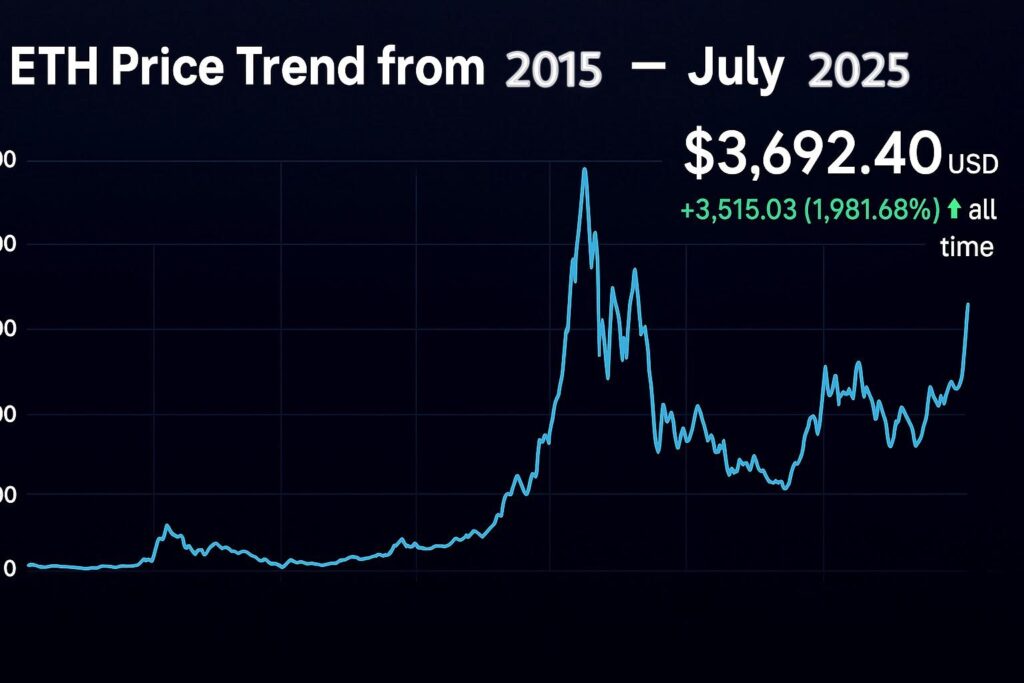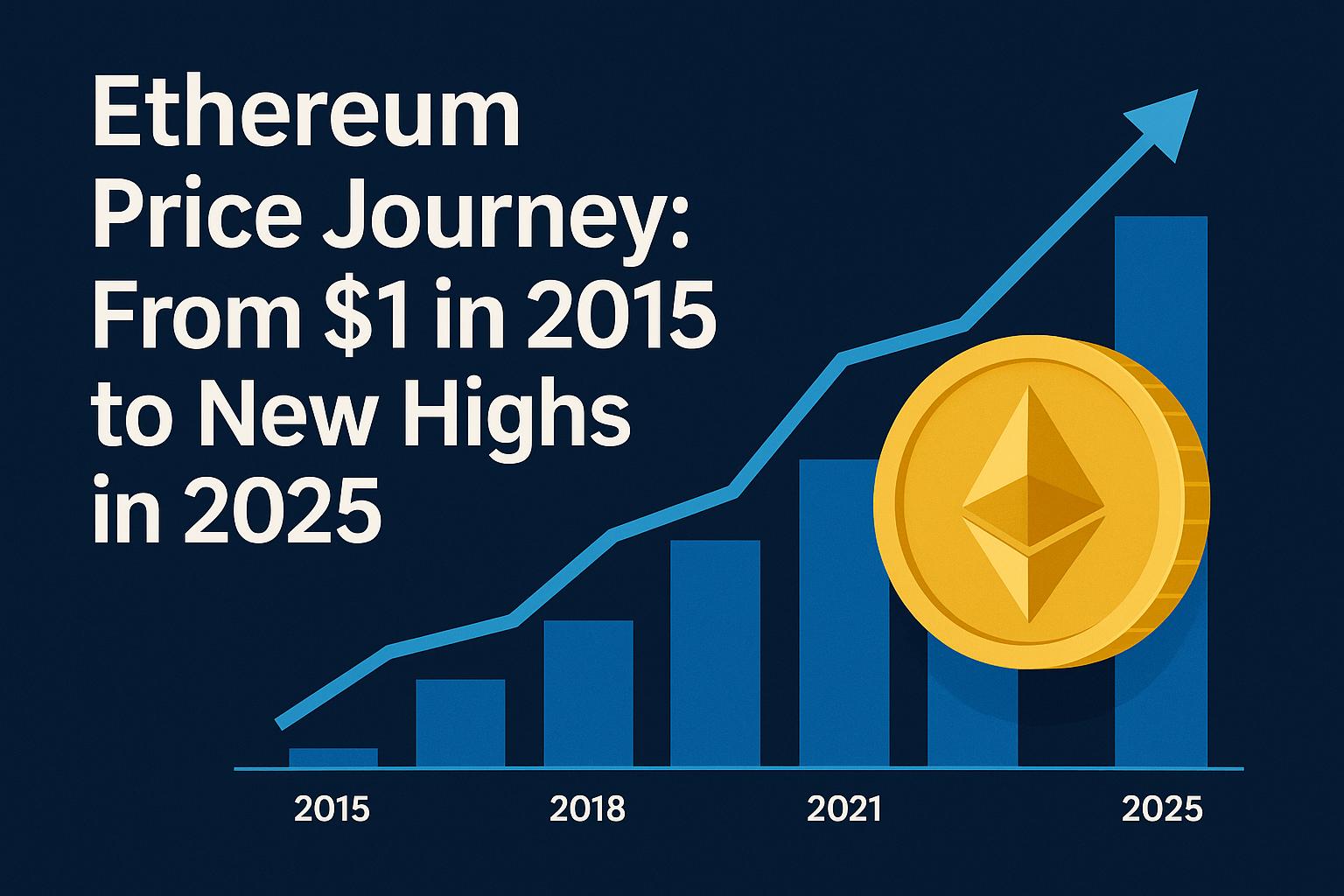
Quick Navigation
How Ethereum Was Born:
The idea of Ethereum was conceived by Vitalik Buterin in 2013, when he saw the limitations of Bitcoin. In 2015, Ethereum was officially launched.
Initially people thought it would be a competitor to Bitcoin, but slowly everyone realized that Ethereum is not just a currency – it is a programmable blockchain.
You must have heard the name of Ethereum many times, but do you know that it is a blockchain based platform on which decentralized applications i.e. D-Apps can be created, and also smart contracts. Before knowing what are D-Apps and smart contracts, let us know about blockchain.
Also Read This : Annuity Investment Strategy: Secure & Powerful Retirement at 30
Blockchain:
It is a kind of digital record book that stores transactions in blocks and these blocks are linked together in a chain. This blockchain technology is decentralized, that is, it is not stored on a single computer or server, but is distributed on thousands of computers around the world. It is not controlled by any central authority, so it is open and accessible to all. It is so secure that no one can easily make changes to it or hack the records stored on it.
Therefore, the ETH platform stores and manages data using this technology and allows its users to make smooth transactions and run programs that are not dependent on any bank, government or company.
D-Apps ( Decentralized applications ):
D-Apps and Smart Contracts D-Apps, or decentralized applications, are applications that run on a decentralized network such as blockchain. These applications are distributed among many independent computers rather than on a centralized server. These computers are called notes. These d-apps are not controlled by any central authority.
These applications are developed by experienced software developers and blockchain developers and are used by common users who want to learn about cryptocurrencies and blockchain technology and use applications such as decentralized finance, charities, social media, marketplaces, and voting systems. Apart from such common users, crypto investors and traders, as well as developers and innovators, also use it.
Smart contracts:
A smart contract is a type of program that runs on the blockchain. They are executed automatically when their conditions are met.
Example: You need to collect rent, but without meeting the landlord. You can create a smart contract that automatically releases the rent when the conditions are met.
This feature makes Ethereum unique and is the reason thousands of D-Apps (decentralized apps) are built on it.
Real Word Applications of Ethereum:
- Decentralized Finance (DeFi): Ethereum has changed the traditional model of finance. Now you can borrow or invest without a bank.
- NFT (Non-Fungible Token): ETH‘s ERC-721 standard sparked the NFT revolution.
- Gaming and Metaverse: Games like Axie Infinity are built on the ETH blockchain.
- Supply Chain: Big companies like IBM are using blockchain for real-time supply chain tracking.
Ethereum vs Bitcoin – What’s the Real Difference?
| Feature | Ethereum | Bitcoin |
| Purpose | Smart Contracts, D-Apps | Digital Currency |
| Launch Year | 2015 | 2009 |
| Consensus | Proof of Stake ( ETH 2.0 ) | Proof of work |
| Supply Cap | Unlimited | 21 Million Maximum |
| Speed | Faster | Slower |
Also Read This : The Incredible Bitcoin Journey from 2011 to 2025
Ethereum Journey: From $1 in 2015 to New Highs in 2025

Ethereum’s journey from 2015 to 2025 has been extremely exciting and unpredictable. When Ethereum was officially launched in 2015, its price was only between $0.75 and $1.00. At that time, only crypto enthusiasts were able to understand this technology. But gradually Ethereum started to attract people’s attention through its ecosystem of smart contracts and decentralized applications (D-Apps).
2015-2018
In 2016, Ethereum’s price fell for some time after the DAO hack, but then there was a rapid recovery. By the beginning of 2017, Ethereum had crossed $10, and then due to the crypto boom, ETH touched its all-time high of around $1,400 by January 2018.
2018-2020
Then came the crypto winter (2018-2020), in which the price fell back to the $100-$200 range. But the announcement of Ethereum 2.0 and the explosion of DeFi (decentralized finance) apps revived the market.
2020-2022
Ethereum set another record in 2021, when its price reached $4,800+ during the bull run. NFTs and DeFi fueled this growth. In 2022, after the crypto market crash, ETH again touched the $1,000-$1,200 level, but after the merger, long-term investors showed confidence again.
2022- Till Now
By 2023-2025, Ethereum has gradually become a stable and mature ecosystem. Ethereum is expected to trade in the $3,500-$4,200 range again in 2025 (due to market volatility), and investors consider it a strong long-term asset—especially with its shift to proof-of-stake, scalability improvements, and regulatory clarity.
These 10 years were not just a price journey for Ethereum, but a period of trust, technology, and adoption that has made it the second most trusted cryptocurrency after Bitcoin.
ETH 2.0 – What Changed in ETH 2.0?
ETH 2.0 or “Serenity” was a major upgrade that improves the speed, security, and scalability of ETH.
- Proof-of-Stake (PoS): ETH previously used proof-of-work, but has now switched to PoS, where people secure the network by staking coins rather than mining hardware.
- Sharding: This allows ETH to process many transactions in parallel – i.e. faster and cheaper.
- Energy efficiency: ETH 2.0 reduced energy consumption by up to 99%.
How ETH Impacts Investors in the U.S.
Ethereum is a long-term investment opportunity for US investors. Some states like New York and California are supporting blockchain initiatives. The SEC has put ETH in the same category as Bitcoin – meaning it is not a security. Platforms like Coinbase and Robinhood allow for easy ETH trading.
The Trump administration’s views on crypto regulation have been mixed, but one thing is clear – projects like Ethereum have now become part of American tech innovation.
The US government is expected to integrate blockchain-based data privacy and identity solutions by 2026 – and platforms like Ethereum will play a key role in this.
Risks and Challenges with Ethereum
Every investment has its own risks — and Ethereum is no different:
ETH is a highly innovative blockchain platform, but its growth also comes with some serious risks and challenges that cannot be ignored. The first challenge is scalability. When a large volume of transactions occurs on the ETH network, the network becomes congested and gas fees increase significantly. This situation becomes quite problematic for small and micro transactions, especially when user experience is important.
The second big issue is regulatory uncertainty. There is still no clarity about ETH’s legal status in countries like the US. If the SEC declares ETH a “security,” it may face new compliance rules that could be challenging for both developers and investors.
The third concern is the vulnerabilities of smart contracts. ETH’s flexibility allows people to create their own custom contracts, but if these are not properly audited, hackers can take advantage of them – as has already been seen in DeFi hacks.
And the fourth concern is network upgrades and forks. Changes like ETH 2.0 can be positive in the long term, but can cause user confusion, bugs, and adoption issues in the short term.
Keeping all these factors in mind, it is necessary to make informed decisions and do constant monitoring while investing in ETH But ETH is constantly getting upgraded to deal with these problems.
Should You Invest in Ethereum in 2025?
If you’re thinking long-term, ETH is a promising option. It’s not just a coin – it’s the infrastructure that’s building the future of blockchain.
ETH‘s use cases are expected to expand in 2025, from gaming to legal contracts.
Keeping ETH in your crypto portfolio while diversifying can be a smart move – but always invest according to your risk tolerance.
Also Read This : When Will Mortgage Rates Drop Back to 6%? Expert Predictions for U.S. Homebuyers in 2025
Final Thoughts:
Ethereum – The Smart Future of Crypto: Ethereum has shown that blockchain is not just about transactions. It is a programmable network that is changing the way the world works.
Whether you are an investor, developer or enthusiast – Ethereum’s ecosystem has something for you.
ETH’s journey to 2025 is full of innovation and adaptability – and it looks like it is going to be the future of the crypto world.
Disclaimer:
“This post is written for informational purposes only. The views or analysis expressed here are not financial or investment advice. Cryptocurrency investments are high risk and market conditions can change quickly. Before investing in Ethereum or any digital asset, please consult your financial advisor. The author or the Chain & Cash website will not be held responsible for any losses incurred by following this content.”


2 thoughts on “Ethereum Explained: The Powerful Rise of ETH in 2025 and Beyond”